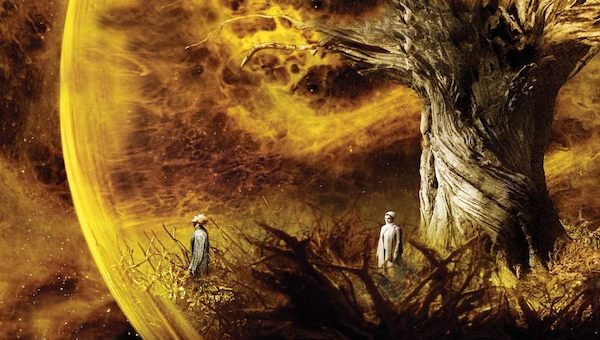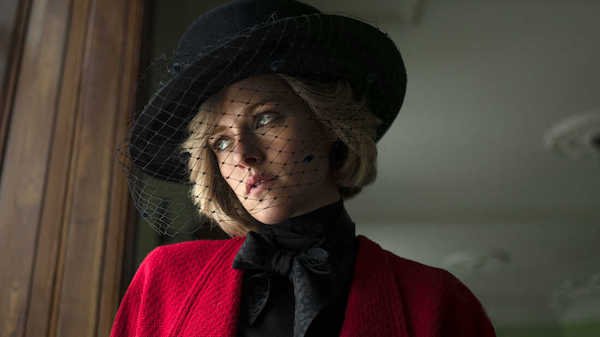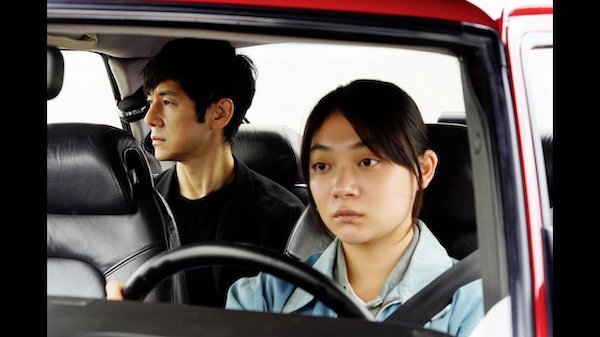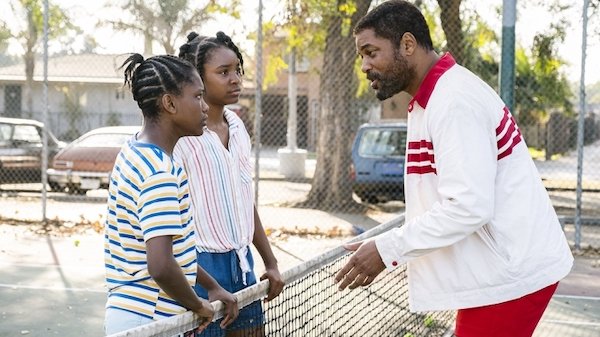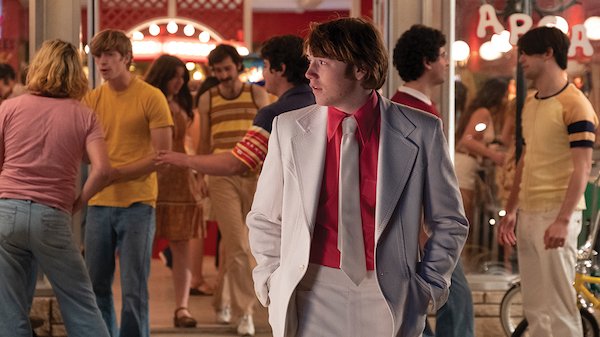Animal Instincts: The Mind of Darren Aronofsky
There are endless ways to unpack heavy themes using metaphor in movies. Just like James Cameron employs the Terminator to examine our reliance on technology, Darren Aronofsky uses animals to expose the heart of human frailty. From black swans to ‘roid-raging rams, his protagonists are spiritually vulnerable outcasts on a quest to reclaim the humanity within—or die trying.
This high-concept storytelling device can be traced back to ancient theological texts like the Bible and the Book of Enoch, both of which depict animals allegorically to represent the many spectrums of human nature. Some of Aronofsky’s films even tackle these subjects head-on, such as 2014’s Noah and 2017’s Mother!
With this in mind, the acclaimed filmmaker returns to big screens on December 9th with a poignant drama unsurprisingly titled The Whale. Premiering at the Venice Film Festival, Aronofsky’s latest was met with overwhelming praise for Brendan Fraser, the once-luminous star you might remember from The Mummy and Encino Man. His towering performance as the film’s protagonist Charlie has been widely regarded as the resurrection of his career, although many critics have condemned Aronofsky’s portrayal as empty and stigmatizing.
To provide further context, The Whale follows a 600 lb. gay man who attempts to rekindle a relationship with his estranged teenage daughter (Sadie Sink) amid growing health concerns. For those familiar with Aronofsky’s movies, it’s clear that he’s drawn toward the provocative side of human drama. From eerie tales of corrosive ambition to gut-wrenching tragedies about drug addiction, his films are deeply immersive character studies that seek to unspool the mortal coil.
“It is often said of directors that they are control freaks. Aronofsky goes one better: He’s a loss-of-control freak. His films are immaculately calibrated surrenders in which his heroes splinter and break upon the rocks of their own consuming obsessions.”
Tom Shone | New York Magazine
Aronofsky stormed onto the indie scene in 1998 with his debut film Pi, a low budget black-and-white thriller that assured his reputation as a scrappy new writer-director with craft and preternatural vision. It shined a light on his uncanny talent for creating stylish thrillers with layered psychological depth on a modest budget, the core virtues that would eventually define his trademark.
Just like his heroes Stanley Kubrick and Terry Gilliam, his movies often begin and end with the human mind. They follow outcasts whose obsessive tendencies lead them into pits of self-destruction. As they fight to claw back every inch of hope that once gave them equilibrium, they yearn for a fulfillment that’s just out of reach.
For Pi’s protagonist Max Cohen, that fulfillment comes in the form of his fixation on the mathematical patterns found in daily life. As a reclusive soul who can only understand human behavior through the lens of his own obsession, the film does a phenomenal job detailing his gradual descent when he comes upon a discovery that uncoils his neurotic existence.
Through word of mouth, the film became an object of cult fascination and the first film ever to be downloaded for sale on the internet. With all its scrappy 90s intrigue, Pi established the template for Aronofsky’s filmmaking career, igniting a fuse that sparked well into the following century.
“For me, the promise of independent film is the ability to experiment. Because the money is independent. I think the best way to get recognition is to do something out there, to push the edges. Unless you hit it — and do something traditional really well, it’s going to be nothing.”
Darren Aronofsky | IndieWire
With his confidence as a filmmaker blooming, Aronofsky scaled up his vision for a stylish sophomore feature entitled Requiem For A Dream, a film you probably recognize for its notoriety as the greatest anti-drug PSA ever committed to film. This crushing adaptation of a novel by Hubert Selby Jr. follows a trio of heroin addicts in New York City whose personal aspirations are blurred when their reliance becomes increasingly dire.
While its crippling depiction of drug culture makes Euphoria look like Paddington in comparison, the film’s key takeaway is its underlying humanity. Where Pi follows an antisocial recluse, Requiem For A Dream observes characters from up close that an audience will inherently empathize with; in spite of their imperfections, they have motivations and backstories that establish a grounded sense of three-dimensionality.
Since the film’s pathos hinges on humanity, Aronofsky avoids depicting his characters as burnouts or degenerates. Instead of distancing the audience, he’d rather lure us into the cockpit of their headspace and tighten the throttle, even after they’ve spun out with an inevitable chance of impact. He’d go on to repeat this gritty psychological approach with films like Black Swan and The Wrestler.
For someone with such a conscious understanding of human nature, it’s curious that spiritualism is a recurring theme in Aronofsky’s work, especially given his agnostic beliefs around subjects of faith. Religious motifs such as original sin, divinity, immortality, betrayal, redemption, and finding life’s meaning are central themes of his more fabled works in the spiritual triptych of The Fountain, Noah, and Mother!
In some respects, he’s the perfect guide to ferry us through such vast topics; with an impartial baseline, Aronofsky translates the fantasy of religious myth as a function of the human psyche. Perhaps best illustrated in 2006’s The Fountain, the story chronicles one man’s (Hugh Jackman) sprawling cosmic quest to defy mortality and find the key to eternal life.
Boasting a $35 million budget, The Fountain was a monumental stretch in Aronofsky’s scope and creative capability as the first studio-funded feature after his two introductory films. Thanks to some impressive art direction, its visual language is one of splendor, cosmic beauty, and vibrant colors that complement the overall breadth of the story he’s ultimately trying to tell.
Despite its trio of parallel narratives, the film’s structure bears resemblance to an ancient parable with an overarching theme: natural law will always prevail over man’s attempts to defy mortality. By establishing an allegory of mankind seeking immortal wisdom, Aronofsky’s epic fantasy highlights our primal fear of universal forces and ultimately results in a powerful tale about finding acceptance in the face of inevitability.
For Darren Aronofsky, the underlining principles of his films run parallel to his personal beliefs as an avid environmentalist. Being an outspoken advocate for animal rights, it’s no wonder he finds ways to incorporate them into his work so organically. From his intimate human portraits to his bold sweeping epics, animals are the symbolic expressions of Aronofsky’s deeper meditations on human psychology.
For Black Swan’s protagonist Nina Sayers (Natalie Portman), the title creature represents more than just a part she’s trying to attain. As a ballet dancer in New York’s most prestigious and competitive dance company, perfection is a non-negotiable condition. In order to perform at the highest levels, Nina must embrace her long-suppressed darkness and abandon her inhibitions—no matter the toll it exacts on her mental stability. Aronofsky’s career-defining thriller is an immersive plunge into the mind of a dancer with ambition that’s all-consuming.
Two years prior, he took a similar approach to The Wrestler, a vérité sports drama that follows Randy “The Ram” Robinson (Mickey Rourke), a faded icon of 80s pro wrestling that hits an existential crossroads after suffering a massive heart attack. The Wrestler is an intimate character study that humanizes Ram as a big-hearted brute with invasive anxieties about dwindling relevance, steroid addiction, poverty, loneliness, and regret over the strained relationship he shares with his estranged daughter.
On the other end of the scale, Aronofsky’s 2014 Biblical adaptation Noah is a magnificent tale that uses animals to express purity. As a filmmaker who normally focuses on smaller stories, Aronofsky took a sharp turn into the massive world of creation mythology. In Noah, the filmmaker depicts its protagonist (Russell Crowe) as a man of steadfast faith who obeys a calling to escape a doomed planet that has forsaken its place in the collective consciousness by killing animals for sport and sustenance. By taking a Sunday School story and beaming it through a lens of staunch humanitarianism, Noah is a grounded yet epic distillation of Aronofsky’s truest aim as a filmmaker.
“I got connected to the story in such a deep way when I was in seventh grade. I had this English teacher. One day, she said, ‘Everybody take out a pen and paper, and write something about peace.’ I wrote a poem called ‘The Dove’ about Noah. Turned out, it was a contest for the United Nations and I ended up winning the contest and reading the poem at a U.N. convention a few weeks later. It was the first time I perceived myself as a storyteller.”
Darren Aronofsky | Washington Post
It’s easy to watch Aronofsky’s films and not see past the surface level downer-ism of bleaker stories like Requiem For A Dream. But there’s a visible poise at play that invites audiences to explore someone else’s headspace with unfettered access. In doing so, he challenges audiences to watch actively by thinking how his characters think and feeling what they feel when placed in their own respective hell, regardless of scale or budget.
As we eagerly await the arrival of The Whale this Friday, it might help to re-frame your viewing experience by putting it into context with the rest of his canon. As a master of depicting headspace, Aronofsky invites audiences to follow along through an uphill struggle that will help his characters find their own interpretations of humanity.



